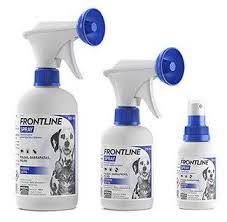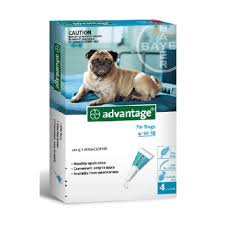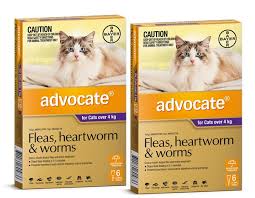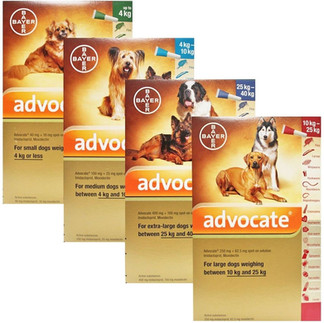Flea Infestation and Control in Cats and Dogs
- Dr Andrew Matole, BVetMed, MSc

- Jun 22, 2021
- 8 min read
Introduction

Fleas are the most frequent external parasites in dogs and cats. Fleas infest both man and animals and are the most common external parasites of companion animals worldwide. Every dog or cat is likely to be infested at some stage in its life. A pet infested with fleas scratches a lot because of the allergy the flea saliva causes on the pets' skin. Fleas are also known to be vectors of zoonotic diseases. Dogs and cats, therefore, play a major role either as reservoirs of some of the disease-causing organisms or as transport vehicles for infected fleas between their natural reservoirs and human beings. Fleas, thus, play a crucial step in the transmission cycle of flea-borne diseases. However, it is now possible to prevent fleas from becoming a problem in our households because of the many products available nowadays.
How difficult is it to get rid of fleas?

Fleas lead a very complex life cycle both away from our pets and on them. It is only the adult flea that lives on our pets and sucks blood. The earlier stages live freely in the environment, i.e., the floors in our homes and the dust in our compounds. For every flea visible on our pets fur, there are hundreds of young fleas waiting to jump on a passing pet or other mammals including humans on the ground.
How is the fleas' life cycle
Adult female fleas lay dozens of eggs every day on the pet's fur. They are pearly white and about the size of a grain of salt. The eggs do not stick on the fur and soon fall off onto the floor.

After a few days, the eggs hatch into maggot-like larvae which hide in our carpets, cracks in the floor or in our dog's bedding. They feed on dust and the droppings of adult fleas, which mostly consists of undigested blood.

After a time, the larva spins a cocoon in which develops into an adult flea. The flea in the cocoon may stay in this resting stage for several months. Finally, the adult flea breaks out of its cocoon, crawls out and starts looking for food. If it cannot find a dog or cat, it hops onto any warm-blooded animal that passes by, including humans.

Warm environments provide ideal conditions for a flea to grow from an egg into an adult. The minimum time for the cycle is two and a half to three weeks. However, intermediate flea stages can live for over a year before reaching maturity and getting back on a pet. Most adult fleas live for 2-3 months feeding - the females feed on blood from biting a pet.

What do fleas do to the wellbeing of our pets?
Fleas cause the following in cats and dogs:-
Fleas are the most common cause of skin disease (allergy) in cats and dogs.

Flea saliva contains chemicals that stop blood clotting until the flea has finished feeding and these cause an allergic reaction in our pets. Not all animals are affected by this allergy, but those that do, suffer severe itching. Affected animals lick, bite or rub themselves, wearing away their fur and making their skin red and sore. Allergies appear most often in warm weather when the flea population is greatest. Skin problems may continue long after the flea which caused it has gone but they should eventually disappear if the pet is treated to remove fleas and the treatment continued to stop the fleas from returning.
Immature fleas pick up immature forms of tapeworms (tapeworm eggs) from the environment.

If a flea is accidentally swallowed by an animal whilst grooming, the tapeworm develops inside the dog or cat's gut and continues to grow to reach as much as 60 cm long. If fleas are seen on a pet, the pet should be treated against tapeworms as well as getting on top of flea control.
Fleas pick up infectious organisms from the environment
A broad range of disease-causing bacteria is found to be widely distributed in common fleas parasitizing cats and dogs.

How to tell if your pet has fleas
Take a sheet of good quality white paper and wet one side by running it under the tap.
Place the sheet on a flat surface, e.g., worktop, with the wet surface uppermost.
Sit your dog against the edge of the paper.
Rub or brush the pet's back so that scurf and flea droppings fall onto the wet paper.
Look for 'coal dust' which, after 30-60 seconds, goes reddish brown. (This is the dried blood in the flea droppings.)

How are fleas controlled?
Successful flea control involves treating both the pet and its environment with effective products that kill the adult and the immature fleas. There is a range of tablets, powders, sprays and shampoos to destroy the adult fleas on our pet's fur. However, not all products are equally effective and they work in different ways - more effective, work faster or longer than others. The products from a veterinary surgeon are usually much better than those sold in pet shops or supermarkets.
Environmental flea control
This refers to treating the areas where the pet spends most of its time, i.e. the places where the pet lies down to sleep. Washing the pet's bedding in hot water destroys the young fleas (but not the eggs) and vacuuming carpets also helps to keep the numbers down. Some products kill the flea itself and some prevent immature fleas from developing and reinfecting the pet in the future. The pet and its environment have to be treated all year-round, even if fleas are not visible.
Why is environmental flea control important?
Only the adult forms of the flea live on the pet. The immature forms (larvae) are tiny maggot-like creatures that live in carpets and pets bedding. Tackling fleas must address this pool of developing parasites as they are always ready to leap back onto a pet as soon as the resident adult fleas are removed. Cleaning carpets with a steam cleaner kills some of the larval fleas and also removes the bits of organic matter that accumulate in carpets that the larvae feed on.
2. Animal flea control
All the cats and dogs in a household should be treated even if only one animal appears to be affected by flea bites. If this is not done, the affected animal may be reinfected with fleas carried by other animals in the home or by fleas it picks up outside.
How do flea control products act in pets?
The products for controlling fleas act in 1 of 3 ways:
1. Chemicals that are toxic to the adult flea 2. Hormones that make the adult female fleas sterile 3. Chemicals that prevent the development of immature fleas
How are flea control products administered?
Flea control products are administered in two ways:-
Topically (applied on pets coat)
Systematically (given by mouth or injection)
1. Topical treatment (applied on pets coat) These treatments are applied to the animals' coat in a number of ways and the available products vary in their effectiveness.
a) Spot-ons
Some products are applied as spot-on, this means a small drop of the drug is put on the back of the pet's neck between the shoulder blades (where they cannot reach to lick or rub it off). The active chemical in the product spreads through the coat of the pet and kills fleas on the skin.
b) Sprays
Sprays (aerosol or pump action) are also common methods of application.
c) Shampoos and powders
These generally only kill adult fleas on the pet at (or very soon after) the time of treatment. Since they do not persist for long in the coat they have to be reapplied often (sometimes weekly) which can be inconvenient. Shampoos are often used for young puppies and kittens as they are generally very safe.
2) Systemic treatments (given by mouth, Spot-On or Spray) These treatments are given to the pet and enter its bloodstream. When a flea bites and takes a drink of blood it also receives a dose of the product. These products act in a number of ways some reduce fertility in the adult fleas so that eggs laid do not hatch. Other products are mimic hormones present in the young flea and stop the immature forms from developing into an adult.
Oral treatments:-
a) Bravecto kills and prevents fleas, ticks and mites infestations for 12 weeks in dogs and cats.
b) NexGard is a powerful flea and tick protection that kills fleas and ticks for a month
c) Simparica is a fast-acting oral flea and tick preventative for dogs that kill fleas and ticks within hours of administration and remains effective for a month
d) Program contains a chemical that prevents flea eggs from hatching. It is given to the cat as a liquid and to the dog as a tablet once a month or by injection every six months. This treatment does not kill adult fleas.
Spot-Ons:-
a) Advantage, Advantix and Advocate kill adult fleas and are available spot-ons.
b) Stronghold is a monthly spot-on for the treatment and prevention of flea infestations in cats and dogs, by killing adult fleas, their larvae and their eggs on the animal, and in the litters of pregnant or nursing cats or dogs. It can also be used as part of a treatment for flea allergy dermatitis (skin inflammation).
Sprays:-
Animal Sprays
a) Frontline kills adult fleas and is available as a pump or spot-on. The pump can be used on animals as young as two days, the spot-on from 12 weeks.
Environmental Sprays
a) Staykil spray contains substances preventing the development of the fleas hard coat and is applied directly in the environment. It prevents larvae from developing into adults.
b) Acclaim 2000 and Indorex sprays contain chemicals that mimic juvenile hormones e.g., methoprene (used in Acclaim 2000) and pyriproxyfen (used in Indorex) that prevent flea larvae from developing into adults. A single application of the spray to the environment can last for six months to a year, depending on the product used. These products also kill flea eggs.
How often should a pet be treated against fleas?
Fleas can breed and cause problems all year round in centrally heated homes or warm climates. Regular treatment with recommended products keeps fleas under control. The interval between treatments also depends on particular circumstances and the products used. In most cases, pet coats need to be treated at least every 3 months (and with some products as often as once a week). Some products are given monthly by mouth.


The key to the success of whichever product used is to use it regularly according to the manufacturer's guide.
What about flea collars?

The collars containing insecticides to control fleas are not very effective. Very quickly they only affect fleas very close to the collar and by the time a flea gets there, it may already have bitten your pet elsewhere. In addition, the collars themselves can cause an allergic reaction in some pets and cats may get caught up by a collar and strangled.
The ultrasonic flea collars probably do not work.
Are flea control products safe?
Most products are very safe if used strictly according to the manufacturer's instructions. Always follow these simple rules:
Read the instructions carefully before using the product.
Never treat a cat with a product designed for use in a dog (unless instructed by your vet). Cats are particularly susceptible to developing toxic reactions to flea control products containing traditional insecticides.
Never treat an animal directly with a product designed for use in the environment.
Do not apply the product more often than recommended by the manufacturer.
If treating a young animal ensure the product is safe for that age.
Do not combine products (unless instructed to do so by your vet).
Where possible treat animals in a well-ventilated area and after treating the house, air well before accessing again.
References
Abdullah, S., Helps, C., Tasker, S., Newbury, H., & Wall, R. (2019). Pathogens in fleas collected from cats and dogs: distribution and prevalence in the UK. Parasites & Vectors, 12(1), 71. doi:10.1186/s13071-019-3326-x
Dougas, G., Tsakris, A., Beleri, S., Patsoula, E., Linou, M., Billinis, C., & Papaparaskevas, J. (2021). Molecular Evidence of a Broad Range of Pathogenic Bacteria in Ctenocephalides spp.: Should We Re-Examine the Role of Fleas in the Transmission of Pathogens?. Tropical medicine and infectious disease, 6(1), 37. doi:10.3390/tropicalmed6010037
Iannino, F., Sulli, N., Maitino, A., Pascucci, I., Pampiglione, G., & Salucci, S. (2017). Fleas of dog and cat: species, biology and flea-borne diseases. Veterinaria italiana, 53(4 ), 277–288. doi:10.12834/VetIt.109.303.3
Rust, M. K. ((2017).). The Biology and Ecology of Cat Fleas and Advancements in Their Pest Management: A Review. Insects, 8(4), 118. doi:10.3390/insects8040118





























































Comments